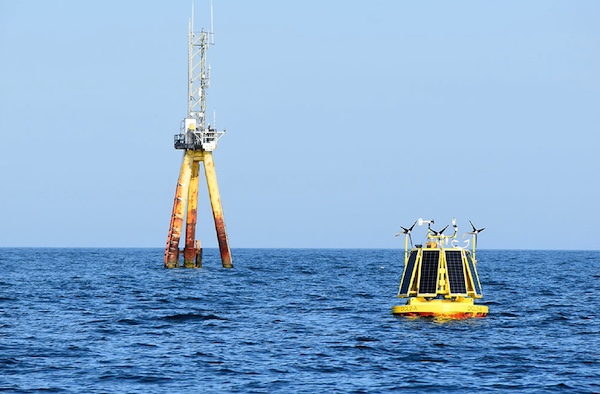DeepCLiDAR, Designed and Built by the CLS Group in Partnership with the University of Maine, has Obtained Stage 2 – Carbon Trust Certification
CLS, a global leader in Earth Observation and surveillance solutions, proudly announces the certification of its DeepCLiDAR Floating LiDAR (FLiDAR) technology. This achievement allows CLS to offer wind industry operators a unique, comprehensive, and ultra-precise combined wind resource measurement and energy assessment solution. The combination of the DeepCLiDAR innovation, together with its extensive experience of in-situ metocean data collection, satellite radar observations, data derivation, and high resolution wind field modeling combine into its SARWind offering creates a unique suite of services in offshore wind resource assessment.

Drawing on over 30 years of expertise in site-specific metocean data collection, led by internationally recognized specialists, the global CLS Group, with a presence across 5 continents, positions itself as a unique player. Experts stationed in Europe, the USA, South Africa, Australia, Brazil, and Indonesia, create a strategic global footprint that enables CLS to deliver an efficient, agile, and sustainable wind resource assessment solution to the offshore wind community. With decentralized expeditions spanning the globe, CLS ensures flexibility in deployments while maintaining a commitment to sustainability.
The company has ambitious plans and has embarked on an industrial mode, establishing its production facility in Cape Town, thereby achieving self-sufficiency in its production capacity.
As the pièce de résistance, CLS achieves the remarkable feat of offering a solution with the best technical features at the most competitive price. This not only cements CLS’ position as an industry pioneer but also reinforces its dedication to providing cost-effective, cutting-edge solutions for a sustainable future.
A modular, adaptable and hurricane resistant floating LiDAR for all environments
The CLS DeepCLiDAR, FLiDAR buoy, hull mimics the NOAA 3 Meter Discus buoy design, making it suitable as a platform deep and coastal ocean metocean measurement applications.
This means that the buoy will follow the wave motion, allowing accurate wave measurements alongside other metocean and marine environmental parameters. The DeepCLiDAR can be deployed in coastal, shelf, and deep waters, providing configurable FLiDAR wind profile measurements at 12 levels, ranging from 19 to 300 meters above sea level, including reference levels at 38 and 100 meters.
Various configurations are possible, depending on wave conditions and local weather, for instance. As specifications vary from one project to another, its design is modular and easily adaptable, supporting a wide range of metocean and environmental sensors.
Featuring bidirectional CERTUS Iridium and cellular communication for data transmission and system management, the DeepCLiDAR buoy system is based on both cutting edge and proven technology with over 10 years of operational reliability. Self-sufficient in renewable energy through its solar panels and wind turbines, CLS’ DeepCLiDAR enables the measurement and monitoring of wind profiles over extended periods without intervention, providing cost and CO2 emission savings , serving as the highlight of CLS’s value chain that it seamlessly complements:
- A combination of wind data provided by the Floating LiDAR that corroborates with those obtained through CLS’s expertise in radar satellites,
- Enriched with high-resolution atmospheric data aggregated with artificial intelligence.
 The first DeepCLiDAR buoy was produced at the Woods Hole Group facility in Bourne, MA, and, deployed at the Woods Hole Oceanographic Institute (WHOI) ASIT FLiDAR test site for over 7 months. The buoy withstood the impact of Hurricane Franklin, the most intense hurricane of 2023, and provided data considered as best practice level according to DNV independent analysis.
The first DeepCLiDAR buoy was produced at the Woods Hole Group facility in Bourne, MA, and, deployed at the Woods Hole Oceanographic Institute (WHOI) ASIT FLiDAR test site for over 7 months. The buoy withstood the impact of Hurricane Franklin, the most intense hurricane of 2023, and provided data considered as best practice level according to DNV independent analysis.
CLS Group DeepCLiDAR buoy systems are now available to the offshore wind market to provide robust, accurate, harsh environment, eco-friendly, wind resource and metocean site characterization measurements that align with Sustainable Development Goals (SDGs) objectives.
CLS Group | https://www.cls.fr/en/











